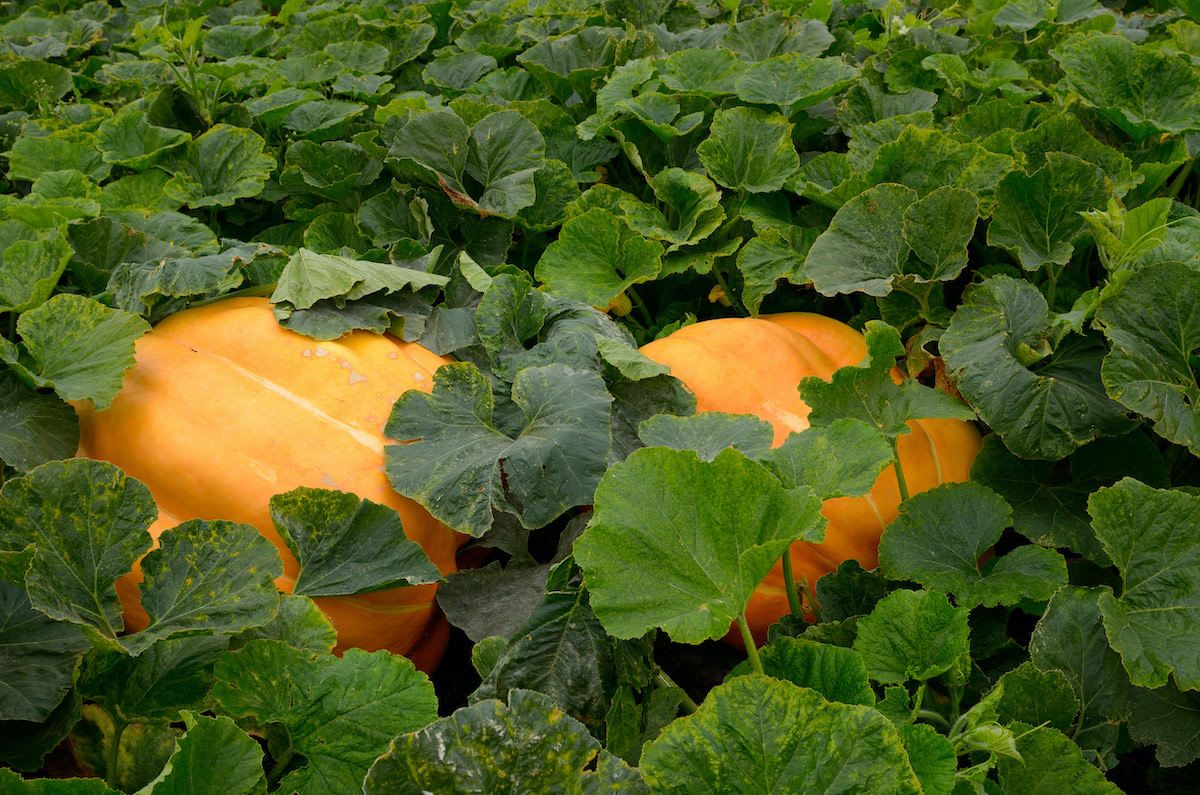How to Grow a Giant Pumpkin in Your Garden
Written by MasterClass
Last updated: Jun 7, 2021 • 3 min read
Most home pumpkin growers cultivate small pumpkins to eat in soups and stews or to carve into jack-o'-lanterns. Others gardeners have a bigger goal in mind: growing a record-setting giant pumpkin.
Learn From the Best
How to Plant Giant Pumpkin Seeds
The easiest plants to grow from seed are those with large seeds, which makes pumpkins a great candidate for seed-starting. Early spring is a good time to start most plants, but to give your pumpkins enough time to achieve world-champion size, you'll need to extend the growing season by starting seeds in late winter and harvesting in late summer or early fall.
- 1. Choose the right seeds. There are multiple giant pumpkin varieties, but most of them are descended from Dill's Atlantic Giant, a variety developed by Nova Scotia-based pumpkin breeder Howard Dill in 1979. The Atlantic Giant pumpkin can produce pumpkins that weigh around 2,000 pounds, but home pumpkin growers can expect 400- to 500-pound pumpkins.
- 2. Start seeds indoors a month before the last frost. Soak the seeds overnight to catalyze the germination process, then plant them in peat pots in a sunny window. Allow the pumpkin seedlings to develop indoors as you wait for the weather to warm. Pumpkin seedlings need an outdoor soil temperature of around 70 degrees Fahrenheit. If you live in a cool or low-light location, use a heat mat and grow light to ensure the seeds germinate and get off to a good start before transplanting.
- 3. Fertilize the soil before planting. Pumpkin plants require good soil—lots of compost or a fertilizer like manure mixed into the planting site should do the trick. If you’re planning ahead for next year, sow a nitrogen-fixing cover crop at the end of the growing season, which will lead to a more fertile pumpkin patch in the spring.
- 4. Transplant seedlings in your garden. Large pumpkins have one of the longer growing seasons, so plant them as soon as possible after the last spring frost. To get as many frost-free days as possible, you may need to extend your growing season by keeping your baby pumpkins in a cold frame or mini greenhouse.
- 5. Plant pumpkin seeds in a spacious, full-sun location. Ensure that your pumpkin vines have room to spread out; plan for about 400 to 1,000 square feet per bed or hill—a mound of soil that helps trap heat and encourage drainage. For giant pumpkins, each hill should hold no more than two seedlings, but you can plant four or five to begin, then thin them down to the strongest two once they take root. Plant seeds about an inch deep, tamp the soil firmly over them with the palm of your hand, and water them whenever the surface of the soil dries out.
How to Grow and Care for Giant Pumpkins
Growing giant pumpkins is a long process that requires meticulous care.
- Protect seedlings with row covers. You can use row covers to protect pumpkin seedlings until the appearance of the first flowers. A pumpkin plant’s female flowers require insect pollination, so be sure to remove row covers occasionally to let in bees and other beneficial insects. Once your pumpkin is fairly large, cover it with a shade structure to keep the skin from hardening.
- Prune regularly. Unlike regular pumpkins, giant pumpkins require pruning. Pinch off flowers until the pumpkin vine is 10 feet long, at which time you can allow a few flowers to form pumpkins. After a few weeks, harvest all but one of the pumpkins per vine so that each plant can put all its energy into producing one giant pumpkin. As your plant grows, it will produce roots and shoots; prune this additional growth.
- Prevent stem breakage. To prevent stem breakage, position the stem of your big pumpkin perpendicular to the pumpkin vine as your pumpkin grows. This will prevent it from splitting off as the season progresses.
- Water regularly. Pumpkins are heavy feeders, which means they need a lot of water over the season. Ensure that your garden bed allows for a moist (but not soggy) soil. When watering, take care to avoid soaking the pumpkins and vines themselves to avoid rot. Adding a layer of mulch around the plants will also help with moisture retention and warmth.
- Try companion planting. Pumpkins can fall prey to any number of pests: Squash bugs, cucumber beetles, squash vine borers, and aphids can all be a problem for developing fruit. Companion planting pumpkins with heat-tolerant neighbors like borage and nasturtiums can help manage and repel destructive insects.
Learn More
Grow your own food with Ron Finley, the self-described "Gangster Gardener." Get the MasterClass Annual Membership and learn how to cultivate fresh herbs and vegetables, keep your house plants alive, and use compost to make your community - and the world - a better place.
